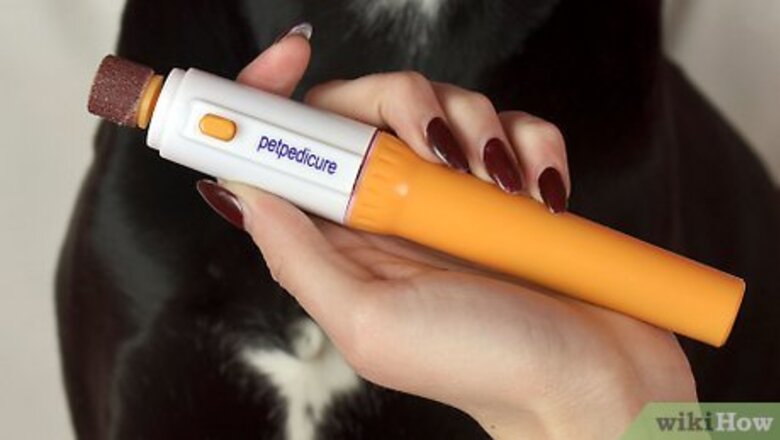
views
Using a Dremel Tool
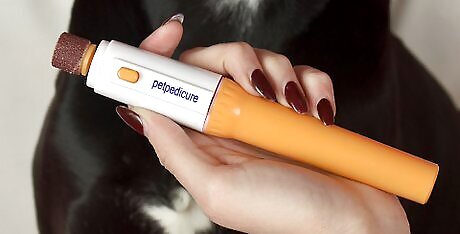
Get a dremel tool made for trimming dog's nails. These are specialized power tools that have an abrasive head, which wears down the surface of the nail. These tools are available at most pet supply stores and from online retailers, such as those that sell supplies for showing dogs. One reason to get a specialized dremel tool is because it will run at a safe speed for cutting down your dog's nails. A dremel tool that is not made for this purpose may run too fast or too strongly.

Turn the tool on to get the dog used to the noise. First, try turning the dremel on while you are in the same room as your dog. If the dog doesn't respond to the noise, move it closer until you are right next to the dog. If the dog does respond, keep it running for a minute or 2 and then turn it off. Continue this daily until the dog is acclimated to the noise and doesn’t mind it.

Acclimate your dog to the vibration. After your dog gets used to the noise, you will need to expose the dog to the vibration of the tool, which can be quite strong. Turn the dremel on while petting the dog and gently press the none-cutting end of the tool onto the dog’s fur. Do this once or twice a day until your dog does not respond negatively to the feeling of the dremel vibrations. Alternate petting and touching with the vibrating tool so that your dog has a positive association with the vibrations.

Get the dog into a comfortable position. Have the dog lay down in a spot where it will be comfortable and where you can access its nails easily. If you have a big dog, this will likely be the floor. If you have a small dog, this could be on a piece of furniture.
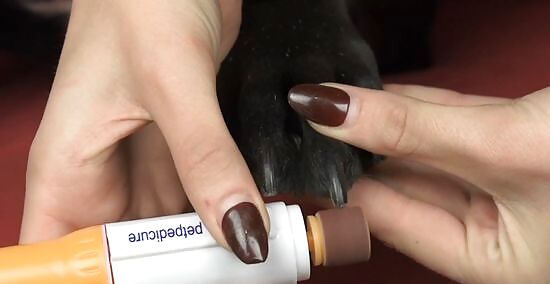
File down each nail with the tool. Hold the paw in one hand and the tool in the other. Gently hold one specific nail, start the tool before it is touching the nail, and then bring it into contact with the nail. Dremel tools can take a few minutes to wear down the nail, so go slowly and only work for as long as your dog will put up with it. Start with short sessions, where you just file down 1 or 2 nails in a session. This will acclimate your dog to the tool more gently than trying to do them all in a single sitting. Work on one nail at a time and don’t apply a lot of pressure, as this can make your dog uncomfortable and resistant.
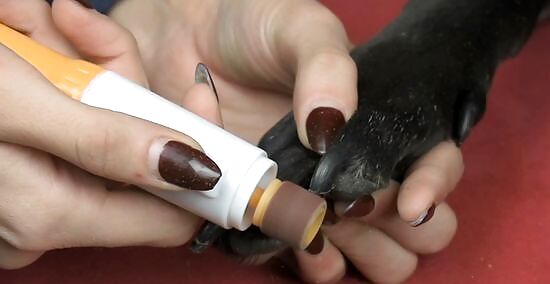
Avoid grinding into the quick. A dog’s nail has a living area in the middle of it that can bleed and hurt if it is cut into. You can sometimes see the area, called the quick, at the core of the nail if you look closely at it. When cutting your dog’s nails, it’s important not to cut them so much that the quick is impacted. How far you can grind may take some practice. When starting out, it’s best to err on the side of caution and just grind off a little bit of nail. If you do accidentally cut into the quick, you should comfort your dog and work to stop any bleeding. The bleeding can typically be stopped with a bandage or by putting corn starch on the surface. If this doesn’t stop the bleeding, consult with your veterinarian.
Using a Nail File to Buff the Nails
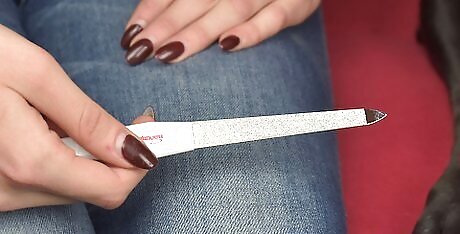
Get a nail file to buff the dog's nails. These are sold at most pet supply stores, veterinary offices, and through online pet supply retailers. However, you can also use any firm file that you already have, such as a metal or glass nail file. Buffing the nails will slowly remove bits of nail, but it won't be as effective as using trimmers.

Get your dog into a position where you can work on its nails. If you have a little lap dog, you can simply position it on your lap. However, a medium to large dog may need to lay on the floor with you sitting next to it. You should be positioned so that you can hold a paw in one hand and your tools in the other. You will create a bit of dust with the file, so pick a spot that can be easily swept or vacuumed.

Rub off bits of the nail using the nail file. Any long or ragged areas can be gently filed away relatively quickly if you have a good file. Be cautious while doing this, though, that you don’t file into the quick. If your dog will not put up with filing, a rough tipped nail can usually be worn down by taking your dog for a walk on concrete sidewalks or other rough, hard surfaces.
Getting a Dog Used to Nail Trimming
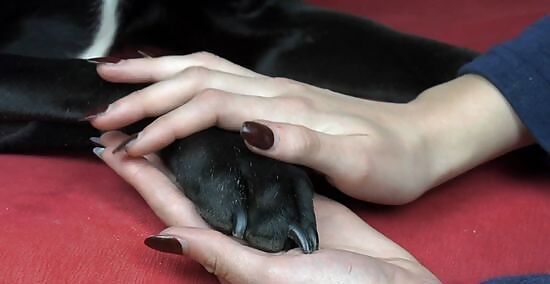
Handle your dog’s paws regularly. When you are petting the dog or brushing it, take a moment to gently rub the dog’s paws. Many dogs are resistant to nail trimming because they don’t like, and are not used to, their paws being handled. The only way to overcome this is to simply get the dog used to it through repeated exposure. When you handle your dog’s paws, take the time to inspect their health. For instance, look at the pads and make sure they are not cracked or damaged in any way.

Make nail trimming time positive. Make the experience of having their paws handled as positive as possible. For instance, pet them and tell them how good they are doing in a sweet voice. If your dog is well behaved while you are trimming its nails, give it a treat as a reward for good behavior.
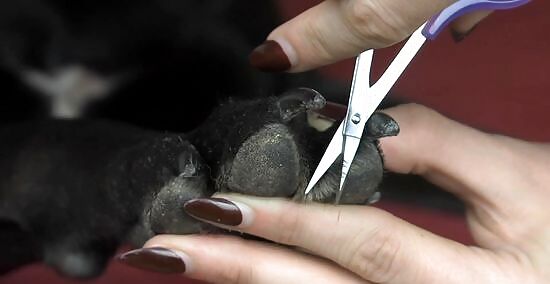
Trim the fur around the nails on a regular basis. Use a pair of dog grooming scissors and gently trim away any fur that is growing down past the nails. Trimming the fur will make the area around the nails clear for trimming but it will also get your dog used to its paws being handled. Be sure to get in between the toes when trimming.

Trim your dog’s nails regularly. Set a schedule in which you trim your dog’s nails every few weeks. Doing it on a regular basis, even if your dog resists the process and you only get a few nails done at a time, will help it get used to the process. It is important to keep your dog’s nails trimmed so that their paws stay healthy and their nails don’t crack or dry out.

















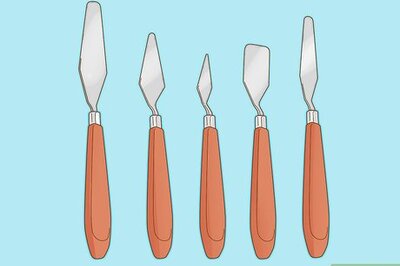


Comments
0 comment